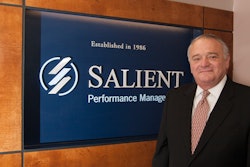
Retailers and manufacturers liquidate more than 95 percent of customer returns and overstock inventory on the secondary market, making it very important for them to be smart about liquidation and perhaps rethink whatever program(s) they have in place. Traditional liquidation methods, including selling this distressed inventory to one or two liquidators, always leave money on the table, adding up to millions of dollars lost over time. That’s quite a hit to the bottom line for companies with already skinny margins.
So the question becomes: How can an organization update its liquidation program in order to achieve maximum recovery for customer returns and other overstock merchandise slated for liquidation? The answer is really quite simple (and likely involves something you are already doing in your forward supply chain): By applying technology and data-driven analytics to your liquidation program, you can increase return, in some cases, by triple digits.
Let’s first take a look at why conventional methods for dealing with customer returns and excess inventory are—like the inventory itself—obsolete. Consider this:
- If you historically sold your inventory to one or two liquidation partners, your recovery value remains low because liquidators are experts at negotiating prices down in order to maximize their own profits. They make money by buying at lower prices, not by selling at higher prices.
- Selling directly to a liquidator can mean a lack of control over who is eventually buying your inventory and how your brand enters the secondary market.
- Time spent negotiating deals for every lot of merchandise you have to sell (phone, fax, email) takes you away from core strategic business activities.
Out with the Old: Applying Technology to Liquidation
Over the past few years, a shift took place in how organizations manage their returned and overstock inventory: Many are bypassing layers of middlemen and incorporating technology-based liquidation programs into their overall business strategy. This may include implementing a software-as-a-solution (SaaS) online marketplace platform that can be customized, integrated and scaled based on your unique needs, or leveraging an established business-to-business (B2B) marketplace, making your merchandise available to thousands of buyers who compete for it via online auctions.
Applying this type of online marketplace platform not only delivers the highest price your buyer community is willing to pay right now, but it also automates the sale process, delivers a faster sales cycle and generates proprietary market intelligence in the form of real data on market prices.
The Answers Lie in the Data
Handing someone the keys to a Formula 1 racecar and telling him to drive around the track as fast as he can is unlikely to yield a great result. Similarly, handing someone login credentials to run his own auction site and telling his to get the highest possible price is unlikely to yield the best result. Having the technology (whether it is the car or the technology platform) is the first step, but to deliver optimal results requires substantial expertise. With auctions, this expertise comes from knowing how to analyze and understand the data that the platform generates, and knowing how to react to those results.
Most of us are familiar with Moneyball, a book-turned-Oscar-nominated film about a Major League Baseball team’s data-driven approach to assembling a competitive roster. The idea is that the historical wisdom of baseball insiders is flawed and that more analytical metrics of player performance can better predict overall team performance. The same tactics can be applied to how organizations approach the sale of their returned and overstock inventory slated for liquidation: Data-driven methods, when applied to an online marketplace, can often increase recovery by 50 percent and sometimes much more.
With that, let’s take look at how to build a data-driven formula for success through bidder acquisition and retention, sustained bidder competition, and inventory optimization.
Find the Right Buyers
Having the right buyers is a critical first step to maximizing recovery. By segmenting buyers by product category, condition code and ability to participate (financial ability, geographic location, etc.), you can properly drive demand. Whether you handle in house or via a solutions provider, developing effective, robust demand generation campaigns can increase recovery by up to 400 percent.
Sustain Bidder Competition
More bidder competition, among the right buyers, means higher prices every time, so continually investing in attracting new buyers through targeted demand generation programs is critical. Consider this: There is up to a 300 percent increase in recovery rates as competition grows from under five bidders to more than 15 bidders.
Generate Repeat Buyers
Repeat buyers create a foundation on which to build a successful marketplace and can result in a triple-digit increase in recovery. There are many operational elements that contribute to success here, including: building customer loyalty programs that reward repeat purchases, or marketing campaigns that target buyers based on their past bidding and buying history.
Optimize Your Inventory
How auction lots are assembled is also extremely important to maximizing recovery numbers. What works best here is very unique to every situation, and there are many variables to be tweaked and tested. This may include segmenting by product type, original manufacturer's suggested retail price (MSRP) per item, overall lot size and even taking the time of year into consideration. It can take a while to figure out what optimal configurations look like, but the most optimized lots can have a double-digit impact on recovery rate.
Rethinking your liquidation program is a must in today’s competitive business climate given the slim margins most retailers are fighting to maintain. Any increase in prices you can achieve on liquidation volume falls 100 percent to the bottom line. If you do the math on your company’s liquidation volume and assume a 30 to 50 percent improvement in liquidation pricing, you see that the impact on operating and net profit can be quite meaningful. Looked at through this lens, a technology and data-driven approach can create a true competitive advantage.



![Pros To Know 2026 [color]](https://img.sdcexec.com/mindful/acbm/workspaces/default/uploads/2025/08/prostoknow-2026-color.mduFvhpgMk.png?auto=format%2Ccompress&bg=fff&fill-color=fff&fit=fill&h=100&q=70&w=100)







![Pros To Know 2026 [color]](https://img.sdcexec.com/mindful/acbm/workspaces/default/uploads/2025/08/prostoknow-2026-color.mduFvhpgMk.png?ar=16%3A9&auto=format%2Ccompress&bg=fff&fill-color=fff&fit=fill&h=135&q=70&w=240)








